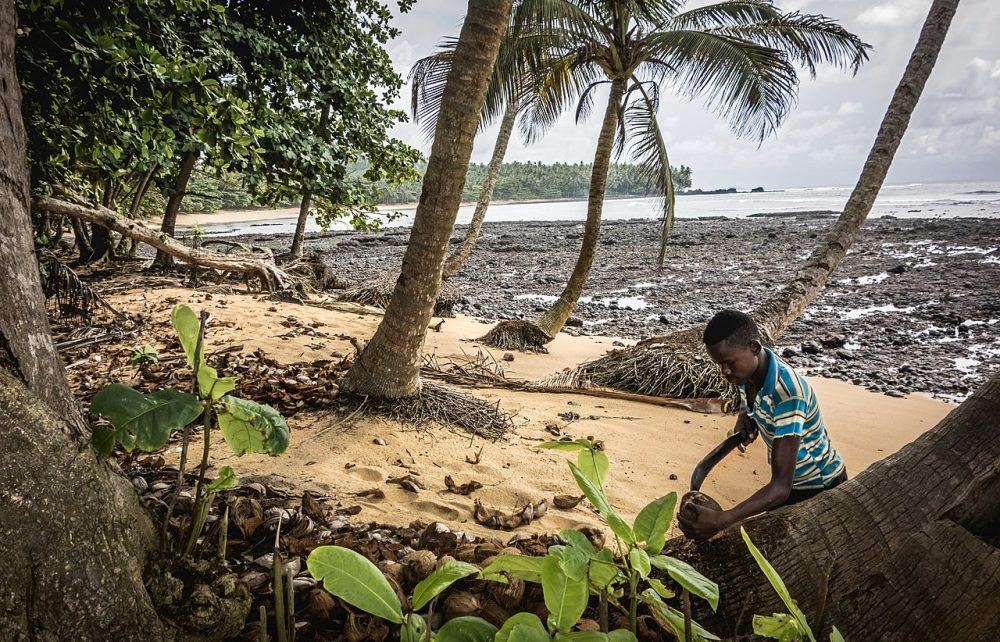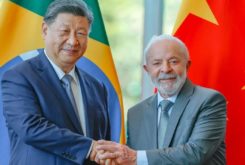The new São Tomé deepwater port was to be the signature project of the reestablishment of relations between China and São Tomé and Príncipe. But the country’s debt level currently advises against the large-scale state-to-state financing initially forecast. After two years of negotiations, the project’s cost appears to have dropped, from an initial US$800 million to that figure as the high end, with sources linked to the project estimating a cost of US$500–800 million. The newly released tender for the port project also now gives the lead to the private sector.
In its latest version, the Chinese proposal was, according to close sources, a fishing port for unloading small and medium-sized boats. According to Africa Monitor Intelligence, this proposal is linked to China’s interests in opening the São Toméan seas to its fishing companies – an initiative that also arouses questions on the part of the government of Jorge Bom Jesus, which fears overfishing of its stocks, especially because small-scale fishing is the base of livelihood for vast segments of the population.
On the São Tomé side, contacts have been conducted by the minister of Planning, Finance and Blue Economy, Osvaldo Vaz (formerly at Angola’s national oil company, Sonangol), also involving the prime minister’s office. From the perspective of Bom Jesus’ government, the size of the infrastructure initially envisaged (US$800 million in the initial project of then PM Patrice Trovoada, which started negotiations with China on funding) was exaggerated given the current financial capacity of the archipelago, the small size of the domestic market and the lack of maritime connections to the continent, but conditions exist for the construction of a docking port.
In parallel with contacts with the Chinese authorities, the government has been receiving proposals from potential stakeholders in the mooring port project, to come up with a mixed solution, where the current infrastructure would be modernised with the support of China (similar to what will be done at São Tomé International Airport), and in a second phase, with private operators, would be extended.
Given the persistent disagreements with the Chinese authorities regarding the scale of the new port to be built in São Tomé, the government began contacts with private parties in 2019.
In late November, the minister of Public Works, Infrastructure and Natural Resources, Osvaldo Abreu, announced the launch of the international tender for the construction of the deepwater port in Fernão Dias, Lobata, in northern São Tomé. The criteria are especially demanding for construction companies to submit proposals. Presented in a DBFO (Design, Build, Finance and Operate) model, the contest was launched by the Technical Unit to Support Public-Private Partnerships.
According to documentation seen by CLBrief, the project foresees a depth of 16 metres for the new port, and the construction of a multipurpose terminal with capacity up to 30,000 tons, able to support the regional affirmation of São Tomé and Príncipe as a strategic point for maritime traffic in the region.
The tender requires a preliminary study of the regional container market and estimated transhipment volume, as well as a preliminary draft of the project (work, equipment, service area, operational flows). Experience in similar projects in Africa is a prerequisite, namely that the applicant has, since 2015, at least five contracts with a minimum value of US$50 million each plus three-port design and construction contracts worth at least US$100 million each.
The winning company will also have to be endowed with significant financial capacity, with assets valued at least US$50 million and an average annual “construction turnover” of at least US$100 million. In addition to the operation-related criteria that value the involvement of the local component in service delivery and job creation as well as the logistic operation connecting to Príncipe island, the structuring of funding will largely dictate the final decision.
The financial proposal must first take into account the lack of funds and the country’s financial unavailability, limited by the International Monetary Fund in the use of credit, given the ongoing austerity program. The state’s financial contribution is conditional on a small part of the financing, which will depend on the size of the proposed work, the cost of which is expected to come in at a minimum of US$500 million.
Despite the intention to diversify São Tomé’s external partners, the state’s lack of liquidity and the difficulties in accessing credit force it to resort to investors supported by financing already available, a scenario favourable to Chinese groups.
Proposals must be submitted by 20 January, which may prove too demanding for many stakeholders in view of the need for significant funding. In that case, the deadline could be extended by the government.




